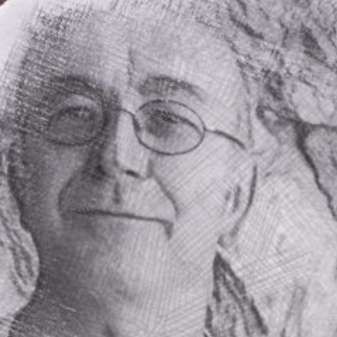Pinchas Zukerman shares a category in my mind with Stevie Wonder. I recall seeing their names on so many LPs in my youth that they had been filed as being of a certain vintage. Investigation revealed both protégés to be much nearer my own age than I could have believed. In this performance of Bruch’s 1886 Violin Concerto no. 1 in G minor, Zukerman recalled that youthfully effortless technical grace, now informed by unmistakable musical authority. Particularly striking were fiery, detached down-bows and the Adagio’s soulful filigree figures. Zukerman seemed very relaxed, turning round to enjoy the orchestra’s tutti passages and later, upon spotting a friend in the audience, smiling and describing a salutational circle with his bow, somewhat in the manner of d’Artagnan. He and Peter Oundjian stood and worked closely together, both greatly enjoying this performance with the Royal Scottish National Orchestra. The audience reaction was very warm with several people on their feet.
Christopher Rouse’s hugely enjoyable piece The Infernal Machine (1981) prompted me to consider the question of humour in a modern musical idiom. Judging by this “perpetuum mobile” for orchestra, I’d say a winning combination would be relatively regular triple meter containing scurrying pointillistic orchestration and momentary outbursts of volume. As the title suggests, the work is not without malevolent undertones, but the overall feel seemed one of fun. Certainly Oundjian seemed to be enjoying it and I spotted several members of the RSNO smiling during the machine’s grinding, cranking progress.
I was very much looking forward to the world première of Tod Machover’s Festival City. An Edinburgh International Festival commission, this portrait of our city seemed, on first hearing at least, to comprise three main sections. It opened with pulseless, sustained sounds intended to suggest the city’s dark side – and possibly some of its dark history, such as graverobbing or perhaps even Burke and Hare, who bypassed the bothersome grave phase, preferring to convert living victim into sellable cadaver, ready for medical research. Picking up somewhat, the central section vividly conveyed the counterpoint of unrelated existences which characterise any city. The final section involved a much more collegiate embrace of of up-tempo Celtic sounds, skilfully skirting the dangerous draw of tourist cliché.
Peppered throughout the work, in keeping with this year’s theme of artists’ engagement with technology, were audio recordings of Edinburgh life submitted via the Internet by lovers of Edinburgh, whether residents or visitors. These samples were triggered by Michael Barnett, manning a Roland synthesizer. A mixing desk at the rear of the Usher Hall ensured a successful balance of these amplified sounds with the RSNO’s live performance. This may even have been controlled by the composer, whom I spotted standing there when leaving. I really enjoyed the mix. There were sounds I recognise from life here, such as the excited cheer of school playgrounds and the street cries of Edinburgh’s most upwardly mobile immigrant population: herring gulls. There were also musical elements in the mix, such as a Gaelic choir and a teenage bagpipe ensemble. In fact, the element I enjoyed most in the piece was the way orchestral harmony informed the sound of the bagpipes; it was tangential to traditional harmonic implications in the pipes’ melodic content. Overall, the harmony was very engaging, feeling undeniably tonal yet lacking completely the singular direction of the tonal harmony of previous ages. This was particularly the case in the busy and central section, which occasionally felt bitonal. I very much look forward to revisiting this piece another day.
The evening’s most substantial work gave the programme its overall title, City Noir. John Adams’ 2009 symphonic work completed the second half’s trio of American items. Since Oundjian’s appointment as Music Director, the RSNO has taken American music to its heart, resulting in some wonderful performances. This was no exception.
Adams described in his own programme note how, without wishing to mimic the sound of film noir scores, he hoped to recreate the atmosphere of 1940s Los Angeles so familiar on our screens. On the strength of this performance I’d say it was a great success; that world of nocturnal drives to unwholesome assignations felt very near. The work’s amazingly dynamic moments called upon a huge battery of percussion – five players in addition to a very active Matin Gibson on timpani and the Scottish National Jazz Orchestra’s own Alyn Cosker on drum kit. The symphonic jazz feel was assured by the very stylish work of numerous soloists, notably Mary Scully, guest principal double bass, Simon Haram, alto saxophone, Huw Morgan, guest principal trumpet and, in a sustained, heroic passage of slide noir, Davur Juul Magnussen, principal trombone. Overall it was a work of exciting rhythmic complexity, requiring a top orchestra such as the RSNO to pull it off.


